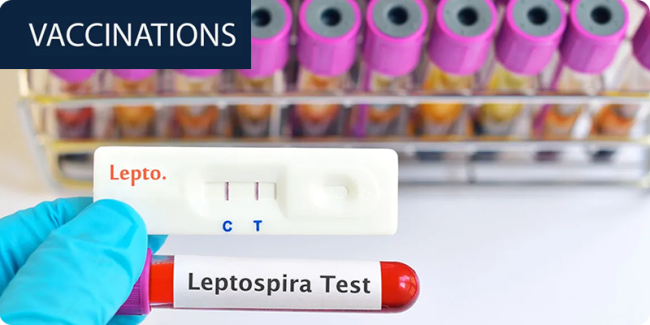
Fleas and ticks: is my pet at risk?
Anytime your pet goes out into the world, she’s being exposed to the opportunity for parasites to hop aboard
Fleas and ticks can attach themselves to your pet as they go about their daily routines. In some states, fleas and ticks are active year-round. In others, peak season can vary from February to November.1 Fleas and ticks thrive in one of your pet’s favorite and most frequent playgrounds: the backyard. So, no matter where you live, it’s important to watch out for these pesky parasites.
Fleas thrive in moisture and shade of grass, and ticks enjoy tall grass they can hide in. But some pet owners may be unfamiliar with other places these parasites could be pouncing on your pets.1 Fleas are capable of jumping close to a foot in the air vertically to jump onto your pet, and ticks can latch on to their victims for up to five days to feed without the victim even knowing.3,4
Fleas also jump from animal to animal. Because it is so easy for a pet to pick up fleas and ticks, it is also easy for these parasites to hitch a ride on your pet and begin to infest your home as well. Anytime your pet goes out into the world – even if only for short walks around the block, play dates at the local park, a visit to the veterinarian, a stint at the boarding kennel, or a trip to the groomer — he or she is being exposed to the opportunity for parasites to hop aboard.
How do I know if my pet has fleas and/or ticks?
The first sign of fleas on a dog or cat is often unrelenting scratching.7 If you have a light-colored pet or one without a lot of fur, check it for very small flat brown insects and little brown flecks. Scrape a couple of those brown flecks onto a paper towel, add a few drops of water, and smear them. If the result causes red dots or smears on the paper towel, that is a sign of fleas. These red dots are the feces and waste product of fleas — otherwise known as flea dirt.8
If you suspect your pet has fleas, consult your veterinarian. If she confirms their presence, all your pets and the environment you share will need to be treated for fleas.
Ticks attach to their host and take a blood meal for hours and sometimes days, so you may find an attached tick with its head burrowed under your pet’s skin. The tick may have already bitten and detached, so it’s not uncommon for pet parents to miss tick bites on their pets.
How do pets get fleas/ticks?
Fleas are the most common external parasite found on pets. They are capable of jumping close to a foot in the air vertically, making it easy for dogs, outdoor cats, and you to carry fleas home. 3
When a flea jumps onto your pet, it will start feeding within 5 minutes and may suck blood for up to 2 ½ hours. A single flea can live on your dog or cat for almost 2 months! 4
Cats and dogs aren’t the only ones who suffer once a flea hitches a ride. They can propel themselves onto humans, in our hair and our bedding, carpets, and furniture cushions, causing an infestation in your home. Because fleas reproduce so abundantly, a single flea can cause an infestation. The key to stopping a flea outbreak is to stop the flea life cycle.
Ticks hang out in grass, shrubs, bushes, and trees and then catch a ride on the nearest warm body. You may not be able to tell at first if a tick has bitten you or your pet.
When a tick latches on, it spits out a local anesthetic so the victim doesn’t feel it. Once attached to your pet, can feed for up to five days.4
Why are fleas and ticks a danger to our pets?
Flea infestations can quickly get out of control because fleas lay eggs in such large numbers. At a rate of 40 to 50 per day for around 50 days, a single female flea can produce 2,000 eggs in her lifetime.4,5 Some pets develop severe allergies to flea saliva, called flea allergy dermatitis, and develop signs, such as itching, that may last long after the fleas have gone.3 Fleas are also responsible for transmitting the dog tapeworm, Dipylidium Caninum, to dogs, cats, and even humans. In addition, fleas can spread bacterial diseases, too.1,3 Huge numbers of newly developed adult fleas can then remain dormant inside cocoons or nests in your home for weeks to months. When the conditions are right — a combination of heat, carbon dioxide, and movement — will they emerge from these cocoons as young and hungry adult fleas, which will bite your pet.2,4
Ticks can cause serious diseases, including Lyme disease, paralysis, and anemia.6
How can we prevent fleas/ticks?
To avoid infestations, many veterinary professionals recommend using an oral or spot-on flea and tick product, all year long to break the flea life cycle and limit bloodsucking ticks from hitchhiking into your living room.
Many flea and tick prevention products kill adult fleas in your pet’s immediate surroundings, and some products may also make sure that any newly hatched fleas that jump onto your pet won’t last long.
The BRAVECTO® (fluralaner) family of products can help protect both dogs and cats from fleas and ticks.
Note that many products that kill ticks, particularly those designed for use on dogs, can be toxic to cats. For example, permethrin is a commonly used insecticide safe for dogs, but it’s toxic to cats.9
How do we treat our pets for fleas and ticks once they’ve been infested?
Help your pet break the flea life cycle with a flea treatment. It’s important to treat your pet for at least 3 consecutive months, to break the flea life cycle.
Clean the house meticulously on the same day. Flea larvae burrow deep into fabrics, bedding, and carpeting, so wash all of these items at a high temperature.
Vacuum your carpets and furniture to remove eggs, larvae and cocoons, and discard the vacuum cleaner bag.
Should I protect my indoor pets from fleas/ticks?6
Indoor pets are also at risk to get fleas and ticks. Pet owners may think that because their pet stays inside they do not need to use a flea & tick preventative, but cats love to relax on the windowsill and many pets investigate areas of the home that may pose some risk, such as the garage, porch, and entryway.
Fleas and ticks affect pets in both cold and warm climates. When it gets cold outside, indoor fleas continue to thrive with help from central heating, making year-round protection extra important.
Living in an urban area isn’t insurance against fleas and ticks. Access to outdoor spaces, contact with visiting pets, and trips outside of the city can all put your pet at risk.
Fleas and ticks can hitch a ride on clothes, shoes, and other objects coming in from outside, so humans and other pets might be bringing these pests indoors unintentionally!
If your pet visits a boarding facility or daycare, she may be exposed to other animals and situations where the risk of contracting fleas and ticks is high.
So yes, nearly all dogs and cats are at risk of picking up fleas and ticks! Your risk increases in households with more activity and pets with a busy social calendar. Since most dogs and cats will pick up fleas at least once in their lifetime, be sure to know what to look for and how to prevent your dog or cat from catching these parasites. Your veterinarian can help you determine which products will work best for your pet.
Written by Katryna Peart, proud pet parent to Ichigo, a Yorkie, and Oliver, a very fluffy Ragdoll cat.
REFERENCES:
- What Is Your State’s Flea-and-Tick Season? American Kennel Club. https://www.akc.org/expert-advice/health/whats-your-states-flea-and-tick-season/
- How to Control Fleas and Ticks Outside. WebMD Pets: https://pets.webmd.com/outdoors
- Rothschild, Miriam, et al. The flying leap of the flea. Scientific American, vol. 229, pp. 92–101.
- Blagburn BL, Dryden MW. Biology, treatment, and control of flea and tick infestations. Vet Clin N Am Small Anim Pract. 2009; 39(6):1173–1200.
- Dryden M, Rust M. The cat flea: biology, ecology and control. Vet Parasitol. 1994; 52:1–19.
- Dog owners – ticks. Pets and Parasites. https://www.petsandparasites.org/dog-owners/ticks/
- Dog owners – fleas. Pets and Parasites. https://www.petsandparasites.org/dog-owners/fleas
- What is flea dirt? PetMD. https://www.petmd.com/dog/parasites/what-flea-dirt
- Feline toxins to steer clear of this kitten season. ASPCA.org. https://www.aspca.org/news/feline-toxins-steer-clear-kitten-season
IMPORTANT SAFETY INFORMATION
BRAVECTO 1-MONTH (fluralaner) Chews: indicated for dogs 8 weeks of age and older. The most commonly reported adverse reactions include itching, diarrhea, vomiting, decreased appetite, elevated ALT, lethargy, and weight loss. BRAVECTO 1-MONTH (fluralaner) Chews is not effective against A. americanum in puppies less than 6 months of age. BRAVECTO (fluralaner) Chews: The most commonly reported adverse reactions include vomiting, lethargy, diarrhea, anorexia and pruritus. In some cases, adverse events have been reported following use in breeding females. BRAVECTO (fluralaner topical solution) for Dogs: The most commonly reported adverse reactions include vomiting, hair loss, diarrhea, lethargy, decreased appetite, and moist dermatitis/rash. BRAVECTO (fluralaner topical solution) for Cats: The most commonly reported adverse reactions include vomiting, itching, diarrhea, hair loss, decreased appetite, lethargy, and scabs/ulcerated lesions. BRAVECTO (fluralaner topical solution) for Cats is not effective against American dog ticks beyond 8 weeks of dosing. BRAVECTO PLUS (fluralaner and moxidectin topical solution) for Cats: The most commonly reported adverse reactions include vomiting, hair loss, itching, diarrhea, lethargy, dry skin, elevated ALT, and hypersalivation. BRAVECTO PLUS (fluralaner and moxidectin topical solution) has not been shown to be effective for 2 months in kittens less than 6 months of age. Use with caution in cats that are heartworm positive. The effectiveness of BRAVECTO PLUS (fluralaner and moxidectin topical solution) to prevent heartworm disease after bathing or water immersion has not been evaluated.
BRAVECTO (fluralaner) has not been shown to be effective for 12-weeks’ duration in puppies or kittens less than 6 months of age. BRAVECTO (fluralaner) Chews and Topical Solution for dogs is not effective against the lone star tick beyond 8 weeks of dosing. BRAVECTO (fluralaner topical solution) for Dogs and Cats and BRAVECTO PLUS (fluralaner and moxidectin topical solution) for cats are for topical use only. Avoid oral ingestion. The safety of BRAVECTO (fluralaner topical solution) for Cats and BRAVECTO PLUS (fluralaner and moxidectin topical solution) has not been established in breeding, pregnant, and lactating cats.
All BRAVECTO (fluralaner) products contain fluralaner, which is a member of the isoxazoline class. This class has been associated with neurologic adverse reactions including tremors, ataxia, and seizures. Seizures have been reported in dogs receiving isoxazoline class drugs, even in dogs without a history of seizures. Use with caution in dogs with a history of seizures or neurologic disorders. Neurologic adverse reactions have been reported in cats receiving isoxazoline class drugs, even in cats without a history of neurologic disorders. Use with caution in cats with a history of neurologic disorders.
More like this
- Caring for a senior pet
 Caring for a senior pet Cats and dogs may need … Read more
Caring for a senior pet Cats and dogs may need … Read more - Dealing with your pet’s allergies
 Dealing with your pet’s allergies Just like humans, pets can … Read more
Dealing with your pet’s allergies Just like humans, pets can … Read more - Five things you may not know about leptospriosis
 Five things you may not know about leptospirosis Leptospirosis is … Read more
Five things you may not know about leptospirosis Leptospirosis is … Read more





